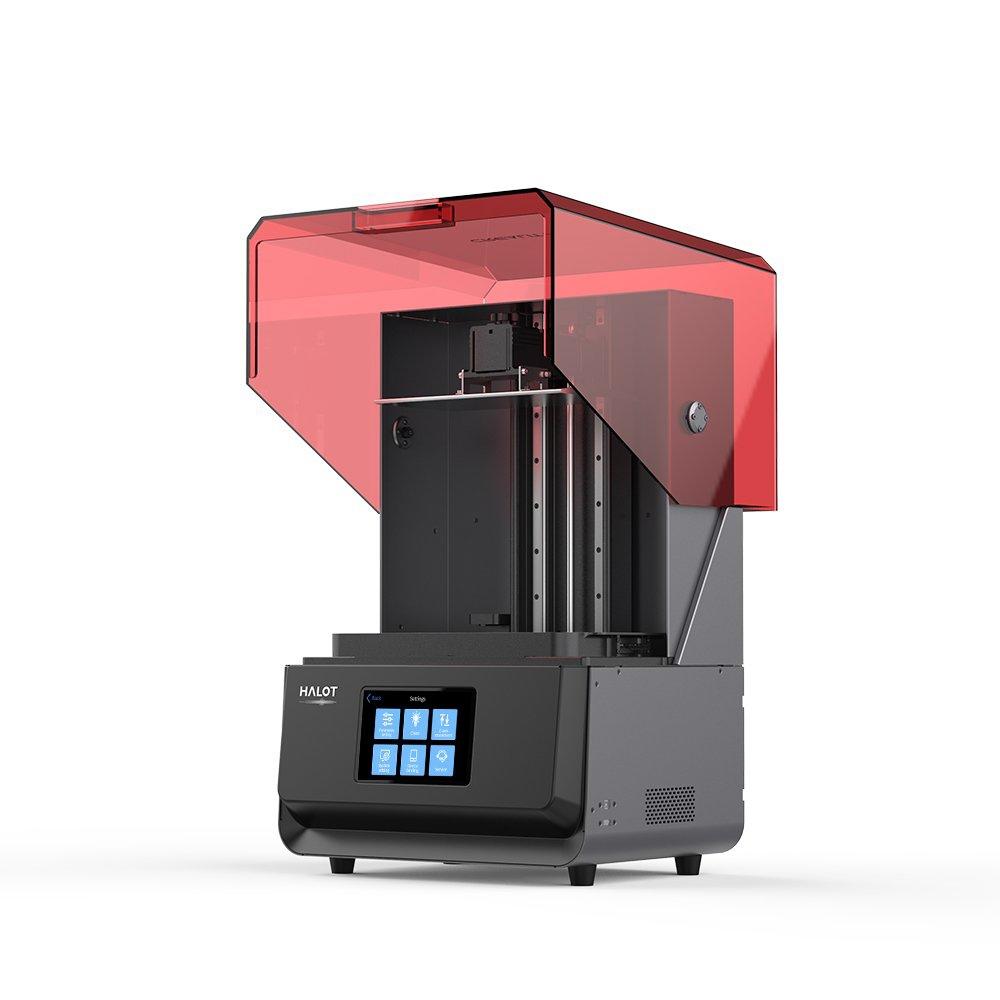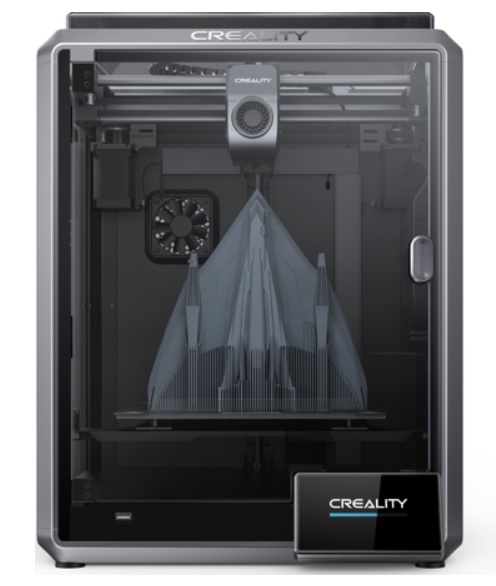Compare Halot Max vs K1
Comparison between the best 3D printers
Choose the best 3D printer at the best price. The cheapest 3D printers are here.
Buy a 3D printer here with 3D Fila.
 |
 |
|
| Model | Halot Max[BUY Halot Max] |
K1[BUY K1] |
| Printing Material | Resin | Filament |
| Buy Resin for Creality 3D Halot Max | Buy Filament forCreality 3D K1 | |
| Estimated price | $3000,00 | $399,00 |
| Manufacturer | Creality 3D | Creality 3D |
| Release Year | 2021 | 2023 |
| Print Volume [mm] | 293x165x300 | 220x220x250 |
| Printer Size [mm] | 480x387x770 | 355x355x480 |
| Weight [kg] | 32,5 | 12,5 |
| Power Loss Recovery | NO | YES |
| Maximum Resolution [mm] | 0,03 | 0,1 |
| Processor | ||
| Display | Display touchscreen 5'' | Display touchscreen 4,3'' |
| Power Supply | 110/220V / 350W | |
| Connectivity | SD / USB / Wi-Fi | Ethernet / USB / Wi-Fi |
| Operating systems | Windows, Mac, Linux | Windows, Mac, Linux |
| Date of registration in the system | 2022-11-04 | 2023-04-17 |
| Release date | 2021 | 2023 |
| Extra features | The Halot Max printer stands out for its large print size (293 x 165 x 300 mm) and uses SLA technology. It has an integral light source for improved accuracy and a strong core with an advanced operating system. Its Z-axis module ensures high precision, supported by efficient slicing software. The machine offers online OTA updates and boasts an adjustable layer thickness between 10 and 200 microns. Its XY-axis resolution is 3840*2160, with 0.05 mm accuracy, and an integral 405nm light source. The printer includes a 5" touchscreen and multiple connectivity options, such as USB, Creality Cloud, and HALOT BOX WiFi. With cutting-edge technology, the Halot Max is ideal for printing small models with uniform precision, thanks to its self-developed lighting system and stable printing mechanism, which includes dual linear guides, ball screws, and an intelligent brake system. | The K1 is an extremely fast FDM 3D printer, reaching 600mm/s, 12 times faster than standard models. Equipped with a Core XY system and lightweight print head, it offers energy efficiency and high print quality. It stands out for its dual-gear extruder and quickly heated hotend, as well as dual cooling to prevent warping. Its robust structure ensures stability at high speed, with optimized software to speed up the printing process. |
| Support for multiple colors and materials (AMS and CFS) | NO | NO |
Notes * |
||
| Cost-benefit | 5 / 10 | 7 / 10 |
| Hardware | 1 / 10 | 4.2 / 10 |
| Tela | . | . |
| Print volume | 3 / 10 | 3 / 10 |
| Performance | 9 / 10 | 5 / 10 |
| [BUY Halot Max] | [BUY K1] |
Conclusion |
| In comparing the Halot Max and the K1 3D printers, several key factors stand out that can help potential buyers determine which printer aligns best with their needs. **Price and Overall Value:** The K1 offers a significantly lower price point, making it an attractive option for budget-conscious users looking to enter the world of 3D printing. In contrast, while the Halot Max is more expensive, it caters to a niche audience that prioritizes advanced features and high-resolution printing capabilities. **Print Technology and Quality:** The Halot Max utilizes SLA technology, which typically allows for finer details and smoother finishes compared to the FDM technology used by the K1. With a maximum resolution of 0.03 mm, the Halot Max excels in precision, especially suitable for detailed models. The K1, while still providing quality prints, offers a lower maximum resolution and is better suited for faster, more basic prints. **Print Volume and Size:** The Halot Max boasts a larger print volume, which is advantageous for creating larger parts or multiple objects in one session. However, the K1 is designed to be more compact, which may appeal to those with limited workspace. **Speed and Recovery Features:** The K1 is engineered for speed, reaching impressive printing speeds that can significantly reduce production time. Its power loss recovery feature is also a considerable advantage, adding reliability in case of unexpected interruptions. The Halot Max lacks this feature, which may deter users who frequently experience power issues. **Connectivity and Usability:** Both printers support various connectivity options, though the K1 offers better ease of use with its basic features and enhanced software optimization. **Cost-Benefit Ratio:** In terms of cost-effectiveness, the K1 clearly performs better, achieving a higher score regarding its combination of price, performance, and user-friendliness. The Halot Max, while featuring top-tier hardware and performance, does not provide the same value relative to its high cost. **Conclusion:** For hobbyists or those new to 3D printing seeking a reliable, high-speed machine without breaking the bank, the K1 is likely the best choice. Its balance of performance and affordability makes it an excellent entry-point printer. Conversely, for professional users or serious enthusiasts needing superior detail and larger capacity prints, the Halot Max could justify its higher price tag with its advanced features and quality output. Ultimately, the decision depends on the user's specific requirements, budget, and intended use for the 3D printer. |

